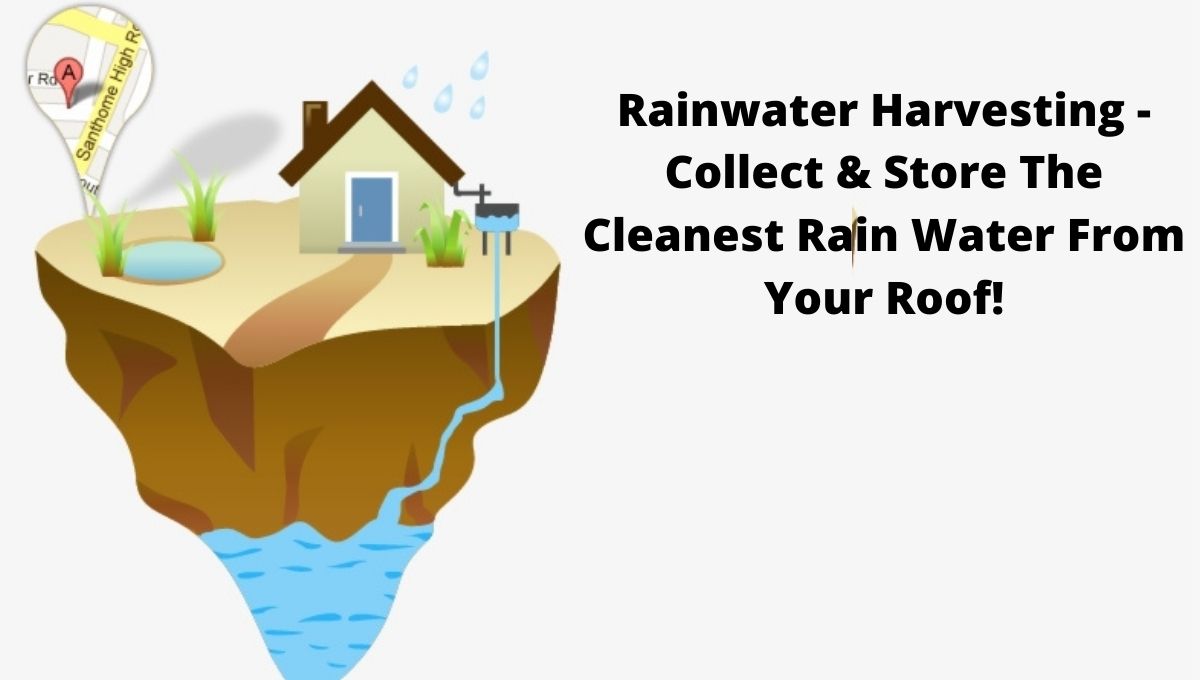Water is life. If it is life, it is undoubtedly precious, and such precious things need to be saved. Rainwater harvesting is necessary for water to be available to us always. How to do rainwater harvesting and the benefits, we are giving here complete information in consultation with experts.
What is the Need for Rainwater Harvesting?
Due to the unmanaged use and excessive exploitation of groundwater, the water level is consistently going down. Due to the scarcity of drinking water, rainwater gets washed away while saved and used throughout the year. Rainwater harvesting will increase the number of trees and plants. This will reduce the use of supply water or underground water and will save it.
How to Harvest Rainwater?
Rainwater harvesting should be done from where we can collect as much rainwater as possible. The roof is considered the right place for rainwater harvesting. Water harvesting is easy and is being made compulsory for societies and homeowners on their land. If someone builds a house in 100 square meters or more extensive, they should adopt a rainwater harvesting system.
How Harvesting is Done
Storage
In this method, rainwater is stored directly for use. Rainwater is stored through pipes for this purpose. Rainy filters are used in this, and because of this, this water is usually clean.
Rainwater harvesting proves useful when the underground water is salty and in the areas of low rainfall. Water stored through rainwater can be used for gardening and cleaning purposes. One of the most massive single investments with rainwater harvesting system is the storage buildings and mini storage buildings.
Recharge
We cannot spend this water for household use,
but in this way, the level of freshwater inside the ground is increased. If
groundwater is salty, recharging sweet water also becomes salty.
The rainwater that is deposited on the roof to be recharged is sent directly to
a pit. Rainwater harvesting filters must be installed for this. This filter is
placed at the bottom of the pipe leading from the roof. Due to this, many types
of dirt reaching the pit stops, and the clean water goes below the earth and
increases groundwater level.
Build Your Own Rainwater Harvesting System
You can also get yourself a rain harvesting system with a little information. Here we are giving thick details on it.
There is a standard formula for how much the size of the pit will be: roof area X 0.8 X 0.025
Suppose your roof area is 100 meters. A pit with a volume of 100 X 0.8 X 0.025 = 2 cubic meters will be made. The depth of this pit will be 2 meters. Length and width 1-1 meters. This pit can store about 2000 liters of water.
How To Make A Pit?
After digging the pit, filter media is placed on the bottom. It consists of brick, charcoal or activated carbon, sand, etc. Make the pit according to the area of the roof mentioned above. The bottom part will be of bare soil. In some places, a pipe of natural soil is poured up to 50 feet so that the water can reach the bottom of the earth quickly. Charcoal is poured to the height. Sand is filled up to 20 cm above the charcoal. On top of the sand, apply a geotextile membrane (a kind of water filter cloth found in hardware shops). It costs 60-square meters. It is better to have a brick-bound building with RCC panels around the pit. You can use an iron grill or precast slab to cover the hole.
Types of water harvesting:
There are so many water harvesting systems in the market, but there are four significant water harvesting types. Conditions, it may be expedient to have a pure gravity system such as:
1 Water Butt:
Many homeowners like to recycle rainwater from the guttering of their house by rigging up water, but this makes sense for the environment. It also offers you extra supply water to your home, garden during a hosepipe ban. If you are doing, merely diverting the runoff rainwater from the drainpipes to a container for future use and ragging up a water butt to the downpipe, effortless procedure. It means there are various models available with diverter. You can use these diverters very quickly, but the principle is ultimately the same attach the diverter to the downpipe and from the hose feed into your water.
You can also save water; there is one crucial thing to consider. Make your water butt on to the stand. So, you can get a watering underneath the tap. You do not forget to use two water butts and just use them by running a connector kit between the two with a diverter.
2. Indirect Pumped
This plan is like those mentioned below; then again, the internal tank can be at any level in the structure, as it does not depend on gravity to gracefully the sources. Preferably a promoter siphon set is utilized to give a pressurized gracefully. This framework uses the advantage of not taking care of mains back-up water to the underground tank while also offering extraordinary adaptability. The sponsor siphons can be customized to suit the structure’s stream and weight necessities.
3. Direct-Pumped (Submersible)
This is the most well-known sort of more expert water gathering framework, especially for homegrown properties, and is commonly the simplest to introduce. The siphon is situated inside the underground tank, and gathered water is siphoned straightforwardly to the WCs or different apparatuses. On the off chance that the tank ought to be at risk for running dry, a limited quantity of mains water is taken care of to look after flexibly. For business ventures, such frameworks will, in general, be double siphon plans.
4. Indirect Gravity
This kind of pump system contrasts in that the reaped water is first siphoned to an elevated level tank (header tank), at that point permitted to gracefully the sources by gravity alone. With this game plan, the siphon possibly needs to work when the header tank needs filling. Likewise, the mains water is taken care of straightforwardly to the header tank, not into the primary gathering tank.
Do You know Rainwater is Treated?
Yes, the rainwater is indeed treated well. Our water is collecting the procedure channel, water before it enters the capacity tank. Scattered pieces of waste or remains, for example, greenery, twigs, and leaves are isolated from the water before it begins the container through a moderated delta. Another channel essential for the siphon, get together, frees little particles’ water before it is siphoned to adjusted machines. The water collected with these systems meets necessities for non-consumable use.


